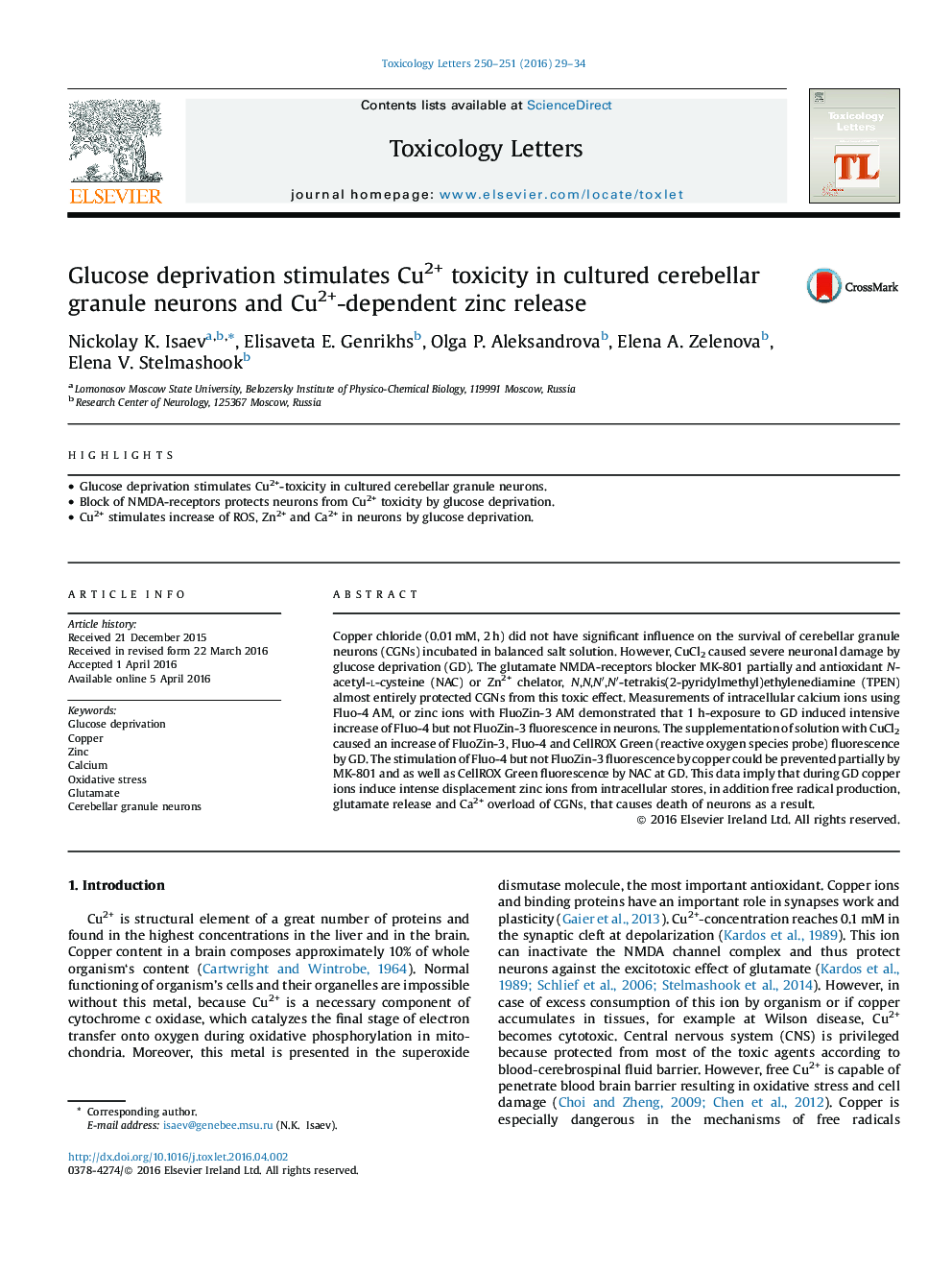| Article ID | Journal | Published Year | Pages | File Type |
|---|---|---|---|---|
| 2598470 | Toxicology Letters | 2016 | 6 Pages |
•Glucose deprivation stimulates Cu2+-toxicity in cultured cerebellar granule neurons.•Block of NMDA-receptors protects neurons from Cu2+ toxicity by glucose deprivation.•Cu2+ stimulates increase of ROS, Zn2+ and Ca2+ in neurons by glucose deprivation.
Copper chloride (0.01 mM, 2 h) did not have significant influence on the survival of cerebellar granule neurons (CGNs) incubated in balanced salt solution. However, CuCl2 caused severe neuronal damage by glucose deprivation (GD). The glutamate NMDA-receptors blocker MK-801 partially and antioxidant N-acetyl-l-cysteine (NAC) or Zn2+ chelator, N,N,N′,N′-tetrakis(2-pyridylmethyl)ethylenediamine (TPEN) almost entirely protected CGNs from this toxic effect. Measurements of intracellular calcium ions using Fluo-4 AM, or zinc ions with FluoZin-3 AM demonstrated that 1 h-exposure to GD induced intensive increase of Fluo-4 but not FluoZin-3 fluorescence in neurons. The supplementation of solution with CuCl2 caused an increase of FluoZin-3, Fluo-4 and CellROX Green (reactive oxygen species probe) fluorescence by GD. The stimulation of Fluo-4 but not FluoZin-3 fluorescence by copper could be prevented partially by MK-801 and as well as CellROX Green fluorescence by NAC at GD. This data imply that during GD copper ions induce intense displacement zinc ions from intracellular stores, in addition free radical production, glutamate release and Ca2+ overload of CGNs, that causes death of neurons as a result.
